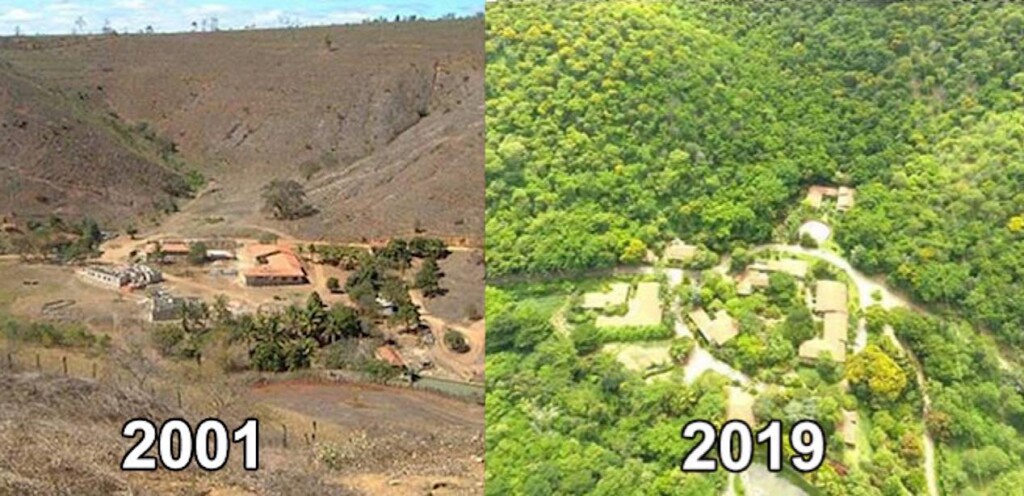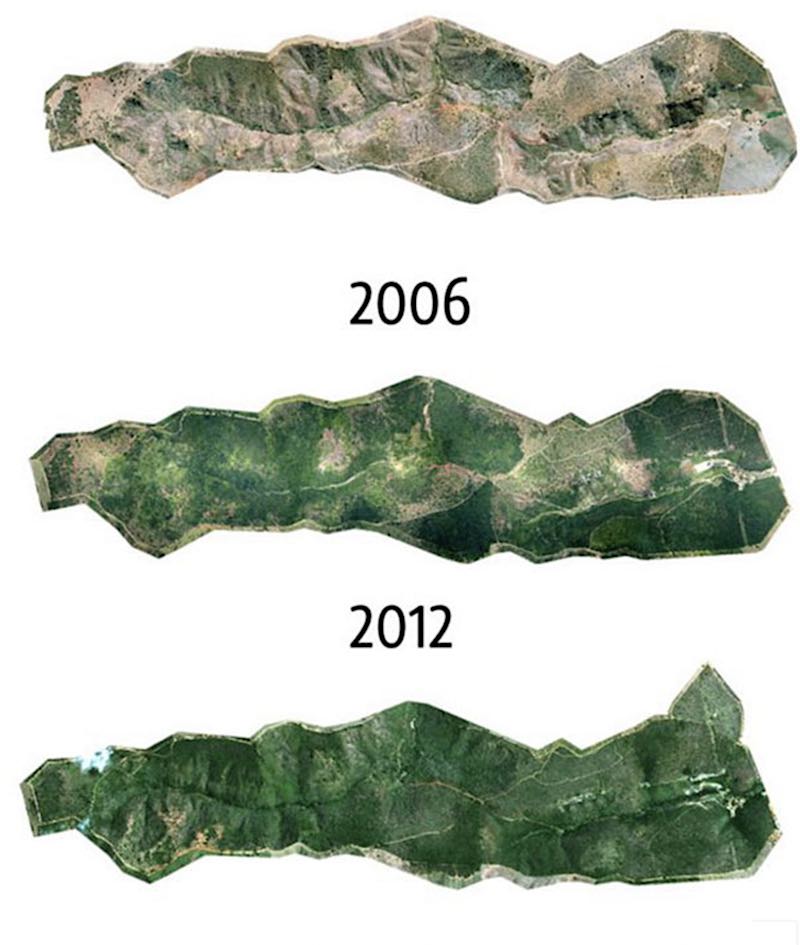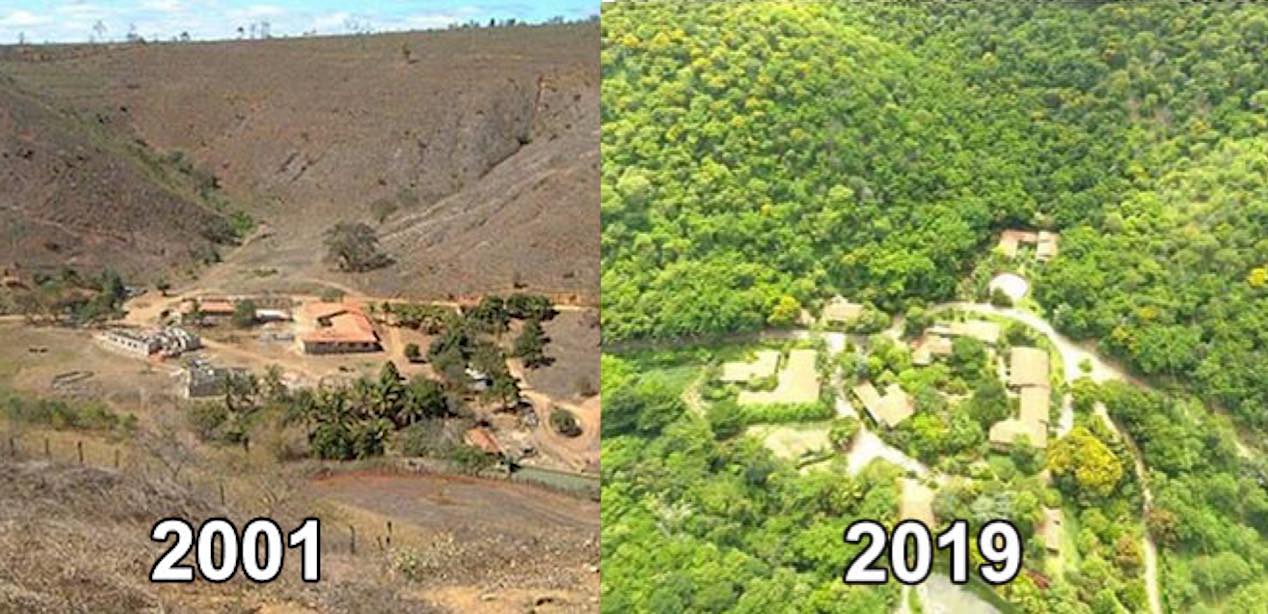
In 2001, the legendary photojournalist Sebastião Salgado had a dream of restoring the forest near his home in the state of Minas Gerais. Now 20 years later, his family property is a biodiverse paradise.
His work over long years saw him, his wife Lélia, and volunteers plant 20 million trees from 290 different species across over 1,500 acres of desiccated hillsides, recreating a natural forest ecosystem into which rare animals have now come to live.
Salgado’s story is a famous one. The photojournalist documented some of the most dramatic events of human misery of the 20th century. He authored half a dozen books, exhibited his photos around the world, and was the subject of a documentary Salt of the Earth.
When he came home in 1998 after reporting on the exodus of the Rwandans into the Congo, the land around his family home had been completely destroyed.
“The land was as sick as I was—everything was destroyed,” Salgado told the Guardian back in 2015.
“Only about 0.5% of the land was covered in trees. Then my wife had a fabulous idea to replant this forest. And when we began to do that, then all the insects and birds and fish returned and, thanks to this increase of the trees I, too, was reborn – this was the most important moment.”

That same year, he and Lélia founded Instituto Terra, which focuses on environmental restoration and sustainable rural development in the Rio Doce Valley. Located in Southeast Brazil, it makes up a part of the other other great landscape of the country—the Atlantic Forest biome, which is far more temperate than the Amazon or the Pantanal, and far more threatened.
OTHER BRAZIL NEWS: Brazil’s President Makes Good on Campaign Promise to Evict Miners from Indigenous Reserves in the Amazon
Today, the property is officially titled Private Reserve of Natural Heritage Bulcão Farm, and hundreds of animal species have returned to the Rio Doce, including ocelots, purple-breasted parrot, and the Atlantic titi.
173 bird species alone have been identified; you can listen to some of their squawking here. Interested conservationists can donate to Salgado’s project on his website or even schedule a visit to the reserve.
SHARE This Famous Success Story With Your Friends…




















